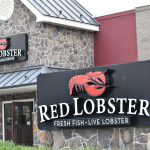China’s aquaculture sector is feeling the strain of rising land prices — with rents for agricultural land up 80 percent to 100 percent in some of the key southern provinces where aquaculture is clustered.
Fish farmers in Fujian, Guangdong and Zhejiang this week told SeafoodSource that acquiring land for ponds is increasingly difficult given competition from industry and real estate as well as an increasingly organized agro-processing industry focused on high-end horticultural output.
In the outskirts of Shishi, a small city near the seafood processing hub of Xiamen in Fujian province, shrimp and tilapia farmers complain that rents have risen from CNY 300 (USD 49, EUR 37.4) to CNY 900 per mu (15 mu = 1 hectare) (USD 146.8, EUR 112.3) since 2003.
“It’s also more difficult to get farmers who rent to us to stick to the contract…they often seek to break the contract mid-way through and we have to close and move ponds and lose money,” said Zhou Jia, who farms eel and yellow croaker on two hectares of ponds on the southerly outskirts of the city.
While China urbanizing its socialist land system means farmers are not able to sell or mortgage land outright while local governments have often abused their powers to requisition farmland for lucrative sales to real estate developments. “It’s very unpredictable if you’re investing,” Mao Yunbi, who runs a fish processing and logistics hub in Shishi, told SeafoodSource. Mao claims land prices have been driven by increased investments in petrochemicals industries for the garments and shoe making industry for which the larger city of Quanzhou (which has jurisdiction over Shishi) has become known.
Nationally, government has for several years grappled with reform of China’s agricultural land law, which grants farmers long-term usage rights but not outright ownership. The latest statement of government policy, the Number One Document of state policy priorities, published earlier this year, didn’t provide a precise solution to the problem but did promise to protect the rights of 600 million smallholders while cautiously encouraging private capital into rural business.
While burdened with contradictions, the Number One Document policy paper does nonetheless pinpoint the three key challenges to aquaculture and agriculture: rising production costs, shortage of rural labor and “barriers between demand and supply” — taken to mean a still-patchy systems of logistics and food safety between producers and urban consumers.
Those are challenges acutely felt in Shishi. Some there see a solution via strength in numbers. The Qianlong Aquatic Breeding Cooperative in an eastern suburb of the city represents a model of agricultural modernization that China’s government has sought to promote in the last decade. Pooling the land of twenty local shrimp farmers, the privately managed cooperative breeds and processes prawns on contract for two larger firms — both with export licenses — in nearby Xiamen. The benefits of increased scale and professional management allows producers to secure stable prices and contracts with customers, including retail chains, staff on the site of the Qianlong cooperative explained.
Across China officials have tried to encourage efficiency by guiding farmers to consolidate their holdings in cooperatives that essentially pool agricultural land that is then worked by the existing farmers or hired help, for a set working wage.
Officially China now has 680,000 such agricultural cooperatives, with farmers earning on average 20 percent more than the average annual farmer’s income, according to the ministry of agriculture. Cooperatives also claim higher prices for their produce, given higher quality and processing capacity.
As a way of improving quality and guaranteeing producers income the cooperative model may be the way ahead, given land price pressures won’t ease up anytime soon. China will likely see continued strong demand for land among backers of specialized co-operative farms, keen to cash in on growing domestic and export demand for fruit, vegetables, fish and other meats - as well as demand from industrial-scale meat and grain producers.
Aquaculture has also been effected by a craze for ‘agricultural parks’ among provincial officials. Incomplete statistics showed that China has hundreds of thousands of such parks, which invariably lump producers together alongside food processing firms – models for land consolidation and value-added agricultural output.
Some see the bigger problem in competition for land among cash-rich private business, taking over agricultural land from farmers for non-agricultural purposes. “We need policy guidelines, we need reforms to boost the development of rural enterprises,” says Professor Li Guoxiang at the Rural Development Institute at the influential China Academy for Social Sciences.






